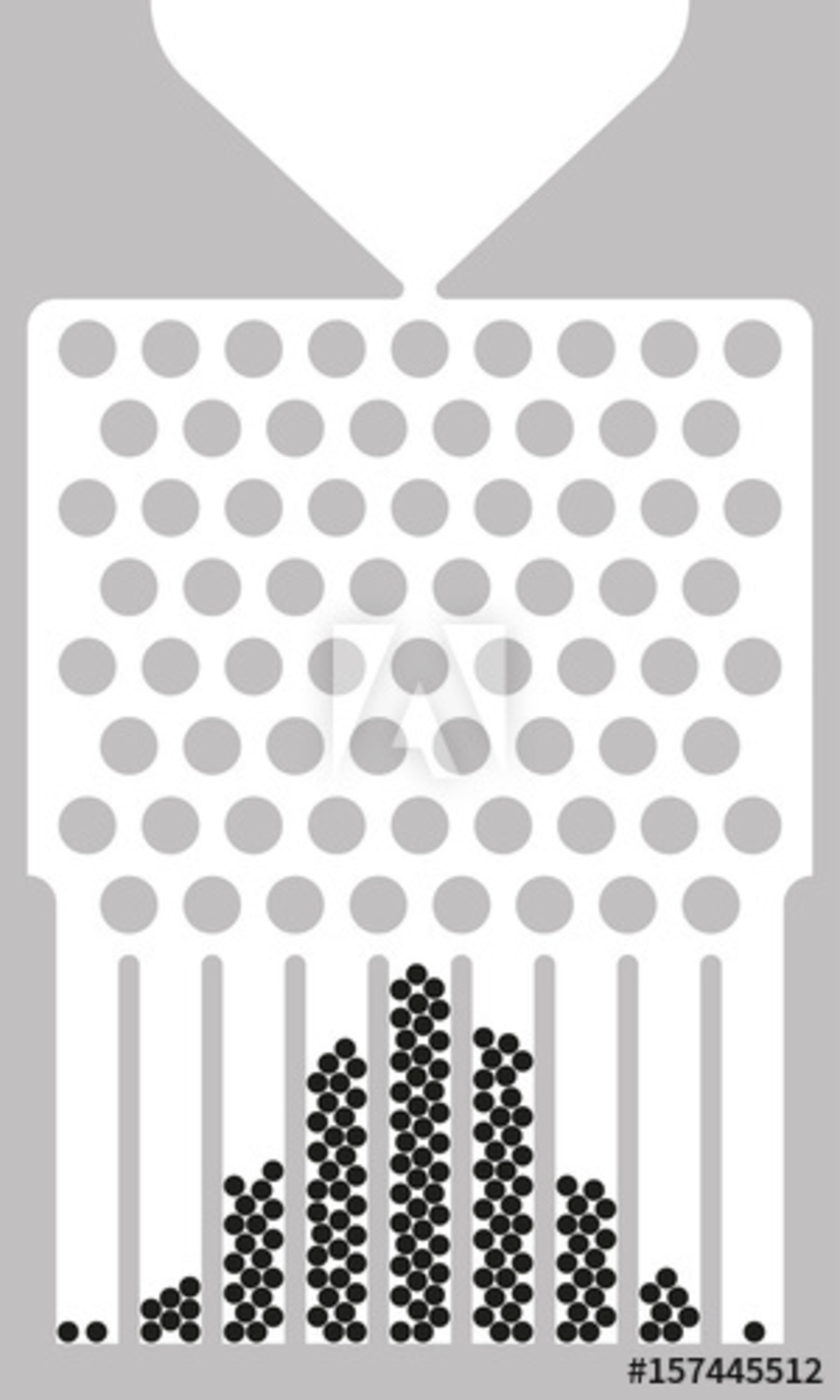Classical combinatorics.
When putting a marble into this Galton board , it falls into one of the marble holes at random, while some holes are more likely to be hit than others.

In how many ways can identical marbles be distributed into the holes?
———————
Details of assumption:
-
All marbles have to be used.
-
An arbitrary amount of marbles fits into each hole.
-
There can be marbles in a hole.
-
Two distributions are identical if and only if the number of marbles in each hole matches, where the order of the holes matters.
The answer is 43758.
This section requires Javascript.
You are seeing this because something didn't load right. We suggest you, (a) try
refreshing the page, (b) enabling javascript if it is disabled on your browser and,
finally, (c)
loading the
non-javascript version of this page
. We're sorry about the hassle.
A standard "stars and bars" argument gets this one. Consider all the arrangements of 1 0 Xs and 8 Is, such as X I X X I I X X X I X X I I I X I X This pattern represents the number of balls in each of the 9 holes of the Galton board, with the Xs representing marbles and the Is the boundaries between the holes. Thus this pattern would represent 1 , 2 , 0 , 3 , 2 , 0 , 0 , 1 , 1 marbles in the holes, reading from left to right.
There is clearly a one-to-one correspondence between these patterns and the possible ball distributions, and hence the number of possible distributions is ( 8 1 8 ) = 4 3 7 5 8